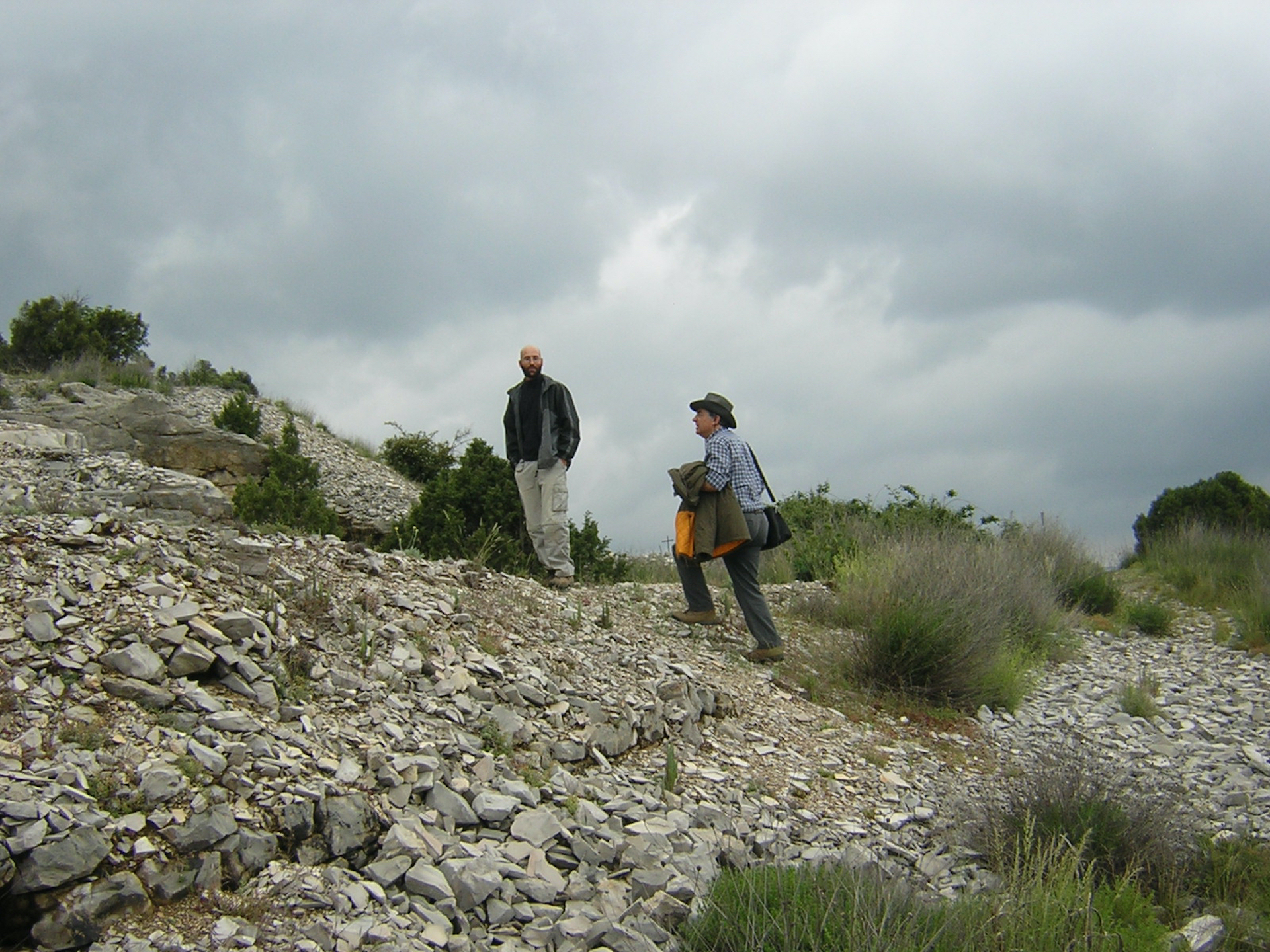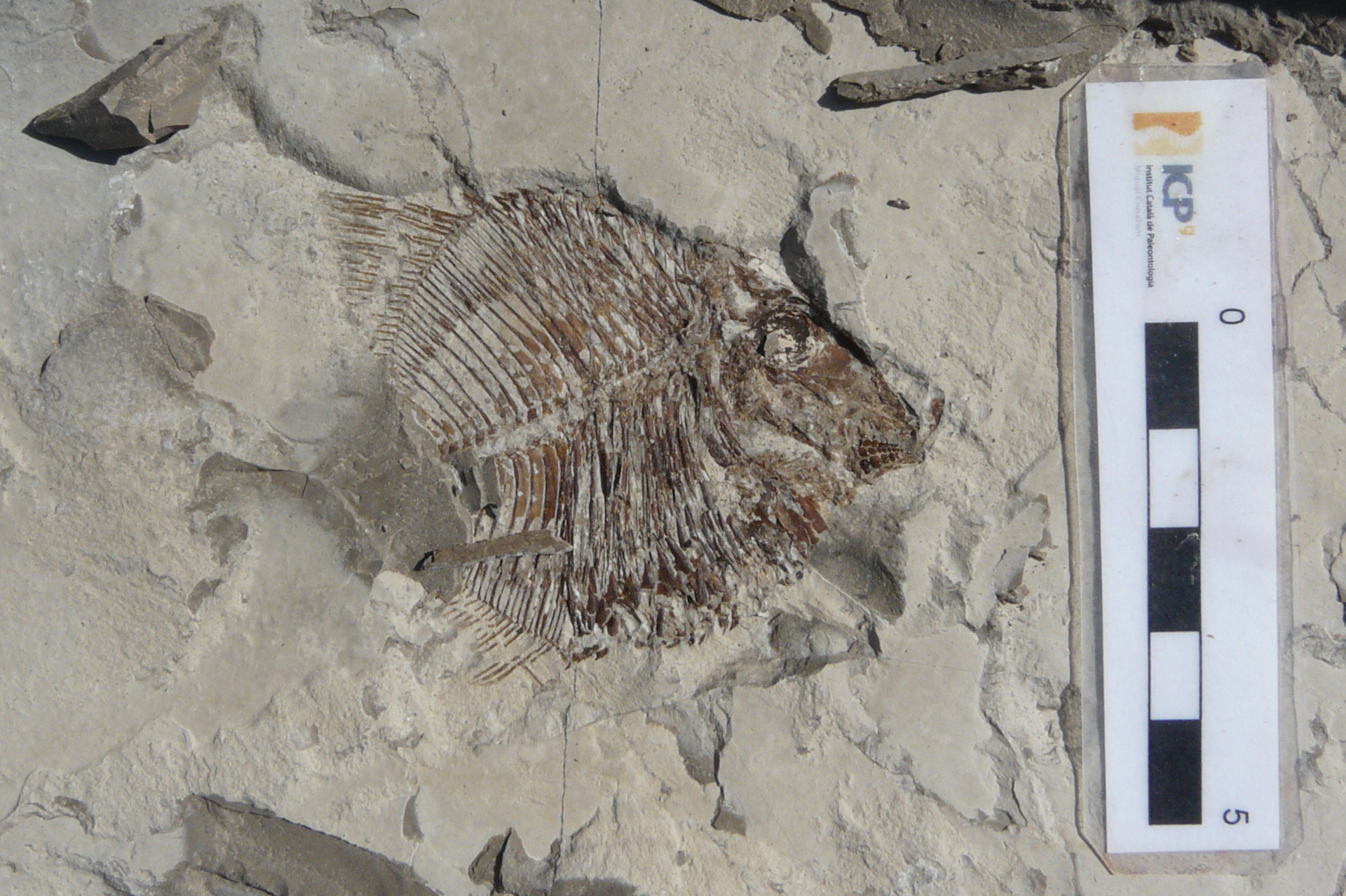The campaigns of the twenty-first century
A young researcher describes a new species of reptile
The beginning of a new round of work and excavation campaigns in the sites of La Pedrera de Meià has its origin in the appearance at the Institut Català de Paleontologia (ICP) of a graduate in Geology who wanted to do his doctoral thesis. This student, Arnau Bolet Mercadal, was very interested in the study of lizards and had at his disposal a specimen of reptile from La Pedrera that could be a new species. The specimen (MGB 47250, deposited at the Geology Museum of Barcelona), turned out to be a new species called Pedrerasaurus latifrontalis (Bolet & Evans, 2010).
Even before starting that doctoral thesis, a first prospecting campaign was carried out in 2008, in which several members of the ICP participated and had the advice of Mr. Antoni Lacasa

Collecting samples from the site
Almost ten years later, in 2017, permission to work at the Pedrera de Meià site was requested again. This time they wanted to collect stone from the rubble of the farm in order to work it at the Montsec de Meià Interpretation Centre. The original idea of bringing an excavator into the site of La Pedrera de Meià had to be rejected since the access road is badly damaged and only has the width of one person.
To solve this problem, the so-called Pedrera d’en Castejón was accessed, located a little to the northwest of the quarry. It is a small outcrop where there is still quite a lot of stone of a fairly large size and even some blocks prepared to be used as lithographic stone. Access could be made by the old road and thus a small volume of stone could be collected with the excavator’s shovel.

Recent campaigns and a new doctoral thesis underway
Since 2018, campaigns have been carried out in La Pedrera, both for the collection of new fossils and for the detailed geological study. The 2018 campaign had a good group of excavators who prepared an area of the site and began to extract fine slabs with fossils.


In 2019 it continued at the same point of outcrop, where work was done on sedimentological and taphonomic aspects. A cleaning of the surface rubble was also carried out with the aim of completing a stratigraphic column of the site.


